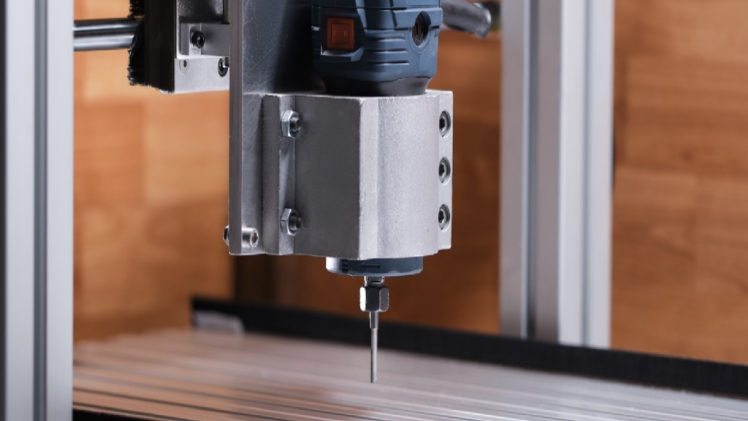In the world of modern manufacturing, precision and efficiency are paramount. Industries ranging from aerospace and automotive to healthcare and consumer electronics demand high-quality components produced quickly and accurately. One technology that has revolutionized metal fabrication processes is the CNC metal router. Computer Numerical Control (CNC) metal routers have transformed traditional machining methods, offering unparalleled precision, versatility, and productivity. In this blog post, we’ll explore how CNC metal routers reshape the fabrication process and the benefits they bring to various industries.
Understanding CNC Metal Routers
Before delving into their transformative impact, let’s first understand what CNC metal routers are. A CNC metal router is a computer-controlled cutting machine that uses a rotating cutting tool to remove material from a workpiece. Unlike manual machining, where operators control tools and machinery manually, CNC routers follow programmed instructions to execute precise cuts, holes, and shapes on metal sheets or blocks.
Precision Engineering
One of the most significant advantages of CNC metal routers is their ability to achieve unparalleled precision. Traditional machining processes are limited by human error, tool wear, and material inconsistencies. In contrast, CNC routers operate with remarkable accuracy, often achieving tolerances within fractions of a millimeter. This level of precision is crucial in industries such as aerospace and medical device manufacturing, where components must meet stringent quality standards.
CNC metal routers use advanced software to interpret design files and generate toolpaths that precisely guide the cutting tool. This level of automation minimizes errors caused by manual intervention, resulting in parts that fit together seamlessly and perform reliably in complex assemblies.
Versatility in Materials and Designs
Another key advantage of CNC metal routers is their versatility in working with various materials and intricate designs. These machines can cut a wide range of metals, including aluminum, steel, brass, and titanium. This flexibility allows manufacturers to explore different material options based on factors such as strength, weight, and cost.
Moreover, CNC metal routers excel at creating complex shapes and contours that would be challenging or impossible to achieve with manual machining methods. Whether it’s intricate patterns on decorative metal panels or precise geometries in aerospace components, CNC routers offer unmatched flexibility in realizing design concepts accurately.
Streamlined Production Processes
Integrating CNC metal routers into manufacturing workflows leads to streamlined production processes. These machines operate continuously with minimal downtime, maximizing productivity and reducing lead times for fabricated parts. Once a design is programmed and toolpaths are optimized, CNC routers can replicate identical parts with consistent quality, eliminating variations seen in manual machining setups.
Furthermore, CNC metal routers can perform multiple operations in a single setup, such as milling, drilling, and engraving, reducing the need for manual intervention and secondary machining processes. This efficiency not only saves time but also reduces material waste, contributing to cost savings and environmental sustainability.
Enhanced Worker Safety and Skill Utilization
CNC metal routers also contribute to improved worker safety and skill utilization within manufacturing facilities. Unlike manual machining, which requires operators to work in close proximity to cutting tools, CNC routers operate behind safety enclosures, minimizing the risk of accidents and injuries. Operators oversee machine operations, monitor performance, and troubleshoot issues, leveraging their programming and machining optimization expertise.
Moreover, CNC metal routers empower skilled workers to focus on higher-value tasks such as design optimization, toolpath programming, and quality control. By automating repetitive machining operations, CNC routers free up human resources for strategic decision-making and innovation, driving continuous improvement across the fabrication process.
Industry Applications and Case Studies
The impact of CNC metal routers spans across various industries, showcasing their transformative capabilities in real-world applications:
- Aerospace Manufacturing: CNC routers are instrumental in producing complex aircraft components such as engine parts, wing structures, and interior fittings. The precision and repeatability of CNC machining ensure that critical aerospace components meet stringent safety and performance standards.
- Automotive Engineering: CNC metal routers play a vital role in automotive manufacturing, from prototyping car body panels to machining precision engine components. The ability to work with diverse materials and complex geometries supports innovation and efficiency in vehicle design and production.
- Medical Device Fabrication: In the medical industry, CNC routers are used to manufacture surgical instruments, implant components, and prosthetics with exceptional accuracy and biocompatibility. These machines contribute to advancing healthcare technologies and improving patient outcomes.
- Architectural Metalwork: CNC metal routers enable the creation of intricate designs in architectural metalwork, including decorative panels, staircases, and façades. Architects and designers leverage CNC capabilities to bring creative visions to life precisely and consistently.
Future Trends and Innovations
As technology continues to evolve, CNC metal routers are poised to undergo further advancements and integration with emerging technologies:
- AI and Machine Learning: Integration of artificial intelligence (AI) and machine learning algorithms can optimize CNC machining processes, predict tool wear, and improve overall efficiency and quality control.
- Additive Manufacturing Integration: Combining CNC routing with additive manufacturing techniques like 3D printing opens up new possibilities for hybrid manufacturing processes, allowing for intricate geometries and material combinations.
- IoT Connectivity: IoT-enabled CNC routers can provide real-time monitoring of machine performance, predictive maintenance alerts, and remote operation capabilities, enhancing overall productivity and uptime.
- Materials Innovation: Advancements in materials science will expand the range of materials compatible with CNC metal routers, offering manufacturers more choices for performance, sustainability, and cost-effectiveness.
Conclusion
CNC metal routers have revolutionized the fabrication process across industries, offering precision, versatility, and efficiency unmatched by traditional machining methods. From aerospace and automotive engineering to medical device manufacturing and architectural metalwork, these machines play a pivotal role in creating complex components with superior quality and consistency.
As technology continues to advance, we can expect further integration of CNC routers with AI, additive manufacturing, IoT connectivity, and innovative materials, driving continuous improvement in manufacturing processes and product innovation. Embracing CNC metal routers empowers manufacturers to stay competitive in a rapidly evolving global market while meeting the demands for high-quality, customized metal components.

